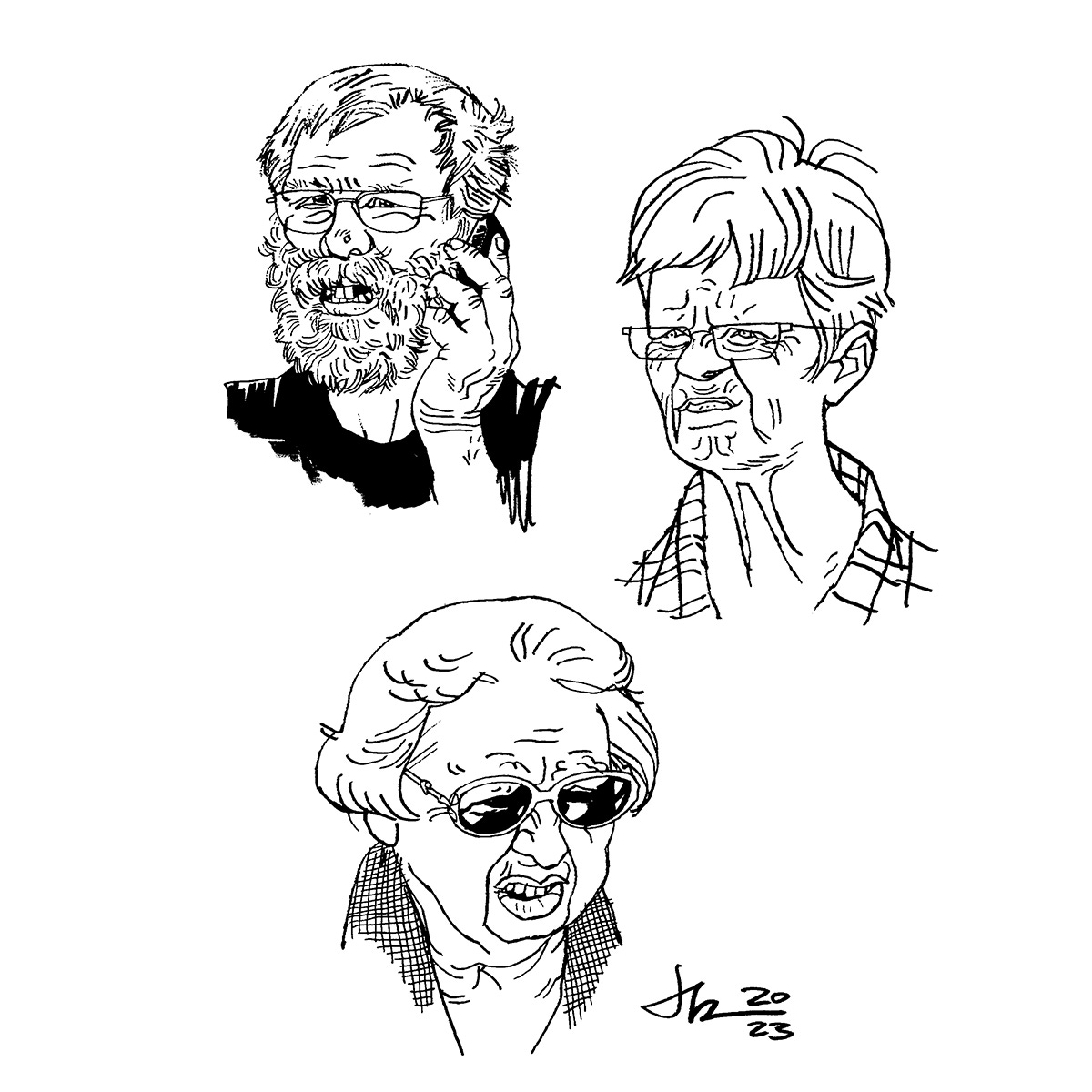My first summer job was working part-time for my dad in the sweltering warehouse of a commercial electrical contracting company.
My parents' goal, was to teach me to value hard work, or to learn to avoid it. I’m not sure which. But even in that controlled environment— the experience definitely did both. If there are one million tales about how bad or lazy of an employee I was, trust me that’s only half the story.
But as much as I loathed going to work that place was a smorgasbord of grizzled faces, crow’s feet, and hollowed sockets— road maps of life experience.
Still, visually compelling as that might sound, it was too hot outside to even think about drawing those faces. Fortunately, by my Junior year, I managed to convince my parents to let me find a part-time summer job of my own and eventually managed to fall face first into a gig drawing caricatures at Carowinds, an amusement park on the border of the Carolinas.
At the time nearly everything I knew about drawing came from comic books. And surprising as this may be to hear— there’s very little about how to draw expressive human faces in the pages of most “mainstream” fare. Much less how to distill a likeness into something simple yet evocative.
So there I am—a teenager, brand new to caricature, tossed into the tiger blender of humanity. I made a lot of bad drawings those summers. Most of which came from trying to charm the person sitting in front of me. Pro tip: If the guy’s wife doesn’t have teeth— they both know it.
After those experiences at Carowinds, I was about 29 years old before I seriously sat down to draw people in the wild again. I was living in New York City, struggling to figure out how to make comics work for me, and pretty certain I didn’t have enough tools in the tool belt to tell the variety of stories I wanted to tell.
Up to that point, most of what I drew came from my imagination and my memory. The simplest way to understand the method is just to crack open a copy of How to Draw Comics the Marvel Way or watch a traditional animator draw. A gesture, refined to a skeleton of shapes, refined to a final drawing. All of which is a perfectly viable and effective way to draw, oftentimes very powerfully.
But I knew I needed to be able to hit from the other side of the plate too…
The drawings of folks I did to occupy myself on the NYC subway were always done with two main goals: 1. To force myself to draw what I see. 2. To develop a way to carry those lessons back to comics.
A big inspiration for that was a book called “DEAR JOHN the Alex Toth Doodle Book”. Basically, the book is a collection of letters/rants/essays between Toth and a friend. But what captivated me was how with only one tool— Toth would attack a form from the outside. These almost contour drawings were free of any kind of inner construction. He was simply measuring what he saw with his eye and transferring it to paper as confidently and efficiently as possible.
Obviously, I was far less successful at the drawing part, but what I found that approach sharpened was my eye for character. Observing the subject in front of me was like reading a short story. Silly as it might sound, I really believe it has helped me as a writer and a storyteller as much as anything.
In a comics landscape where everything is so visually loud, I think it’s important to learn how to be quiet now and then. You can’t guitar solo all the time, Slash.
Speaking of Toth, here’s a little bit of his advice I stumbled onto recently.
Also— If you’re looking for a good resource to do a little observational drawing from images online, there is an Instagram account called Earthsworld that I’ve gotten some good mileage out of lately. Most of the faces above you can also find there. Aight, that’s all for today. Hope y’all have a great weekend.
More soon…
-j











I can’t believe how long it’s been since Southern Bastards last saw print… I need more so so so bad!!!!
Brilliant. Again only makes me sad we can't appreciate this in comics.